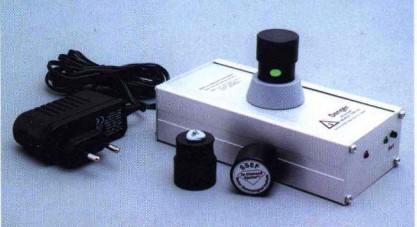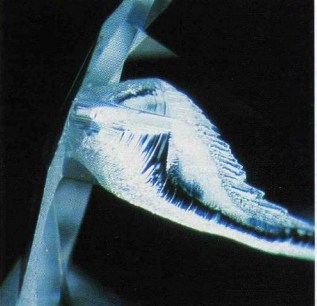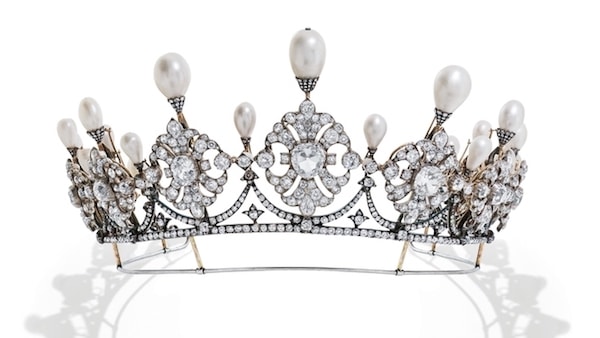
Pearls & diamonds: a royal selection
by Dr. M.S. Krzemnicki, first published in Facette 28 (May 2023)
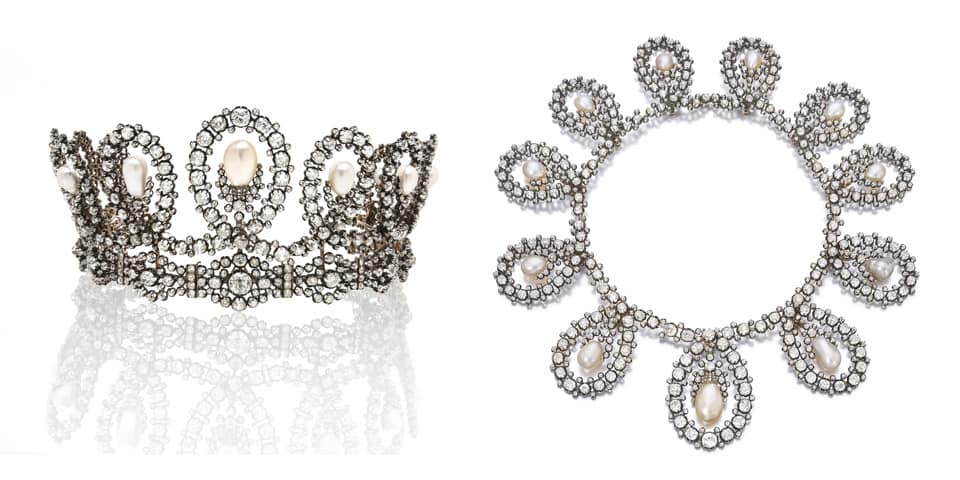
The SSEF is known worldwide as a leading authority in gem testing, and as such we have the great pleasure to scientifically analyse some of the most prestigious and important jewellery before it is offered up for auction or in private sales. Apart from testing the gem materials in such jewellery, we are often impressed to see the ingenuity of jewellers in their designs and craftmanship. This is especially the case when jewellery of historical provenance is submitted to SSEF. In the past few months, we have analysed several historic pearl tiaras and necklace, from which we present in the following a royal selection.
The first pearl and diamond tiara (Figure 1) was presented in 1867 to Maria Vittoria dal Pozzo (1847-1876) as a wedding gift on the occasion of her marriage to Amedeo of Savoy (1845–1890), Duke of Aosta, later crowned King of Spain. This tiara contains 11 drop-shaped natural pearls of partly remarkable size, set together in a classic loop design with a ne selection of colourless old-cut diamonds. It was created by Musy Padre e Figli, court jeweller of Turin, and one of the oldest goldsmiths in Europe. The design can be interpreted as a variation of the Savoy knot, or knot-of- love, a symbol for the House of Savoy and Italian monarchy. This tiara has been designed in a way that it can also be worn as a necklace after a few simple manipulations. Such “dual” use is especially prevalent in noble and royal jewellery, as they can then be adapted to various occasions, such as a coronation, a royal wedding, or just an opulent gala at the royal court.
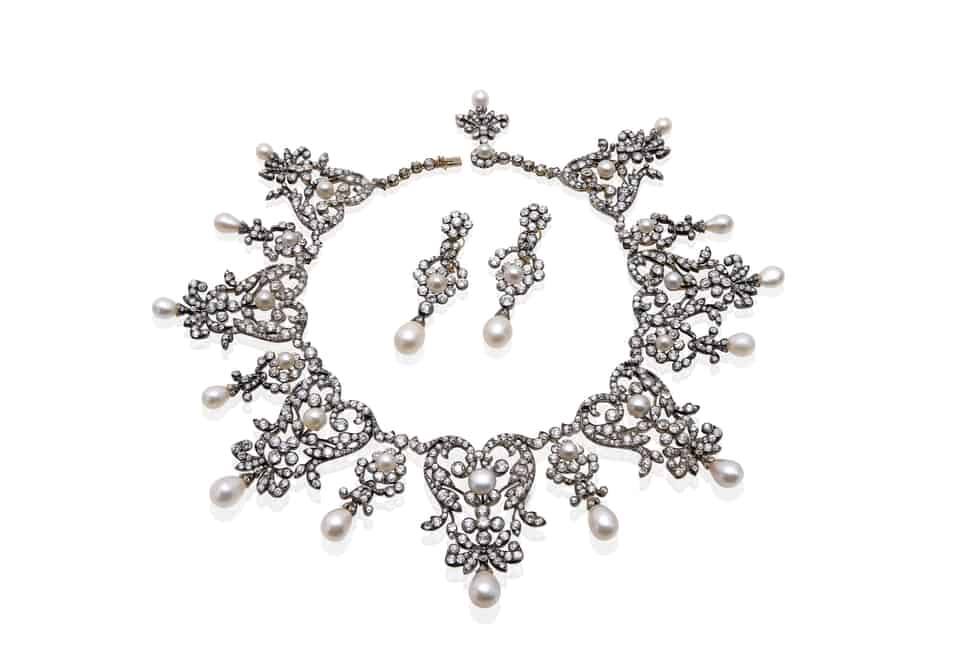
The second item is a Belle Époque pearl and diamond necklace (Figure 2) by Boucheron. Originally designed as a tiara in 1896, it was shortly afterwards transformed by Boucheron into a necklace and matching ear-pendants (1902). The 32 saltwater natural pearls in this jewellery have been carefully selected and exhibit beautifully matching button- to drop-shapes and a very ne pearl lustre. Their attractive colour subtly ranges from white to light cream. In addition to these qualities, part of these pearls show rosé and green overtones, poetically also referred to as the “orient of pearls”. These overtones are an iridescence effect visible on the surface of pearls and contribute greatly to the beauty of the described pearls.
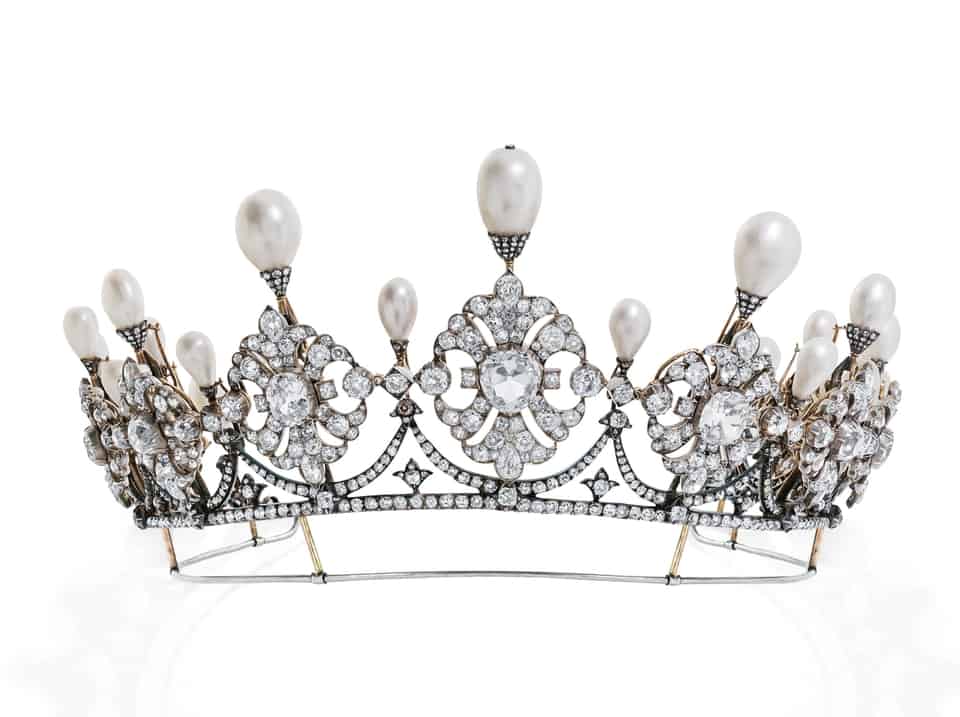
The last item to be described here is the Fürstenberg pearl tiara. This tiara is set with 23 saltwater natural pearls of partly remarkable size in a historic design of the late 19th century. Based on the provided documentation, this pearl tiara was part of the jewels of Fürstenberg, a noble family from Southwestern Germany, hence its name. The pearls in this tiara are characterised by a beautifully matching drop shape and a ne pearl lustre. Their colour subtly ranges from white to light cream. The combination of well-balanced trace elements found in these natural pearls are characteristic of saltwater pearls.
The X-ray analyses of pearls in jewellery is often quite challenging for the analysts at the SSEF. This is especially the case when they are set in a rather rigid tiara with lots of metal mounting and diamonds. We were thus fortunate to have been able to analyse these pearls from the Fürstenberg tiara in a first round when they were detached from the main tiara setting. A selection of these radiographies is shown in Figure 4, revealing characteristic “onion-like” ring structures in these natural pearls. In addition, these radiographies show also different drilling situations, from being half-drilled to fully drilled.

Want to learn more Gems & Jewellery?
The advanced training course (ATC) “Gems & Jewellery: History, Identification and Important Trends” is unique in that it combines the history and significance of gems in historic and modern jewellery.

